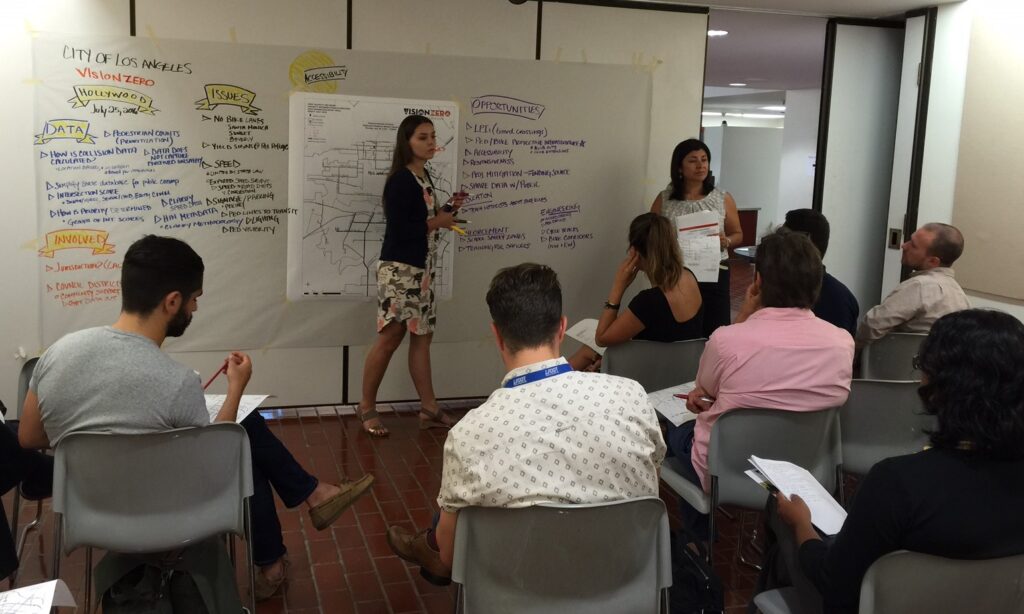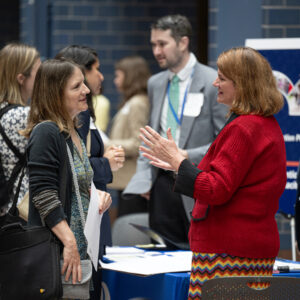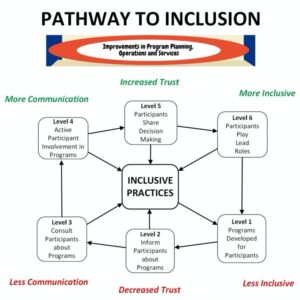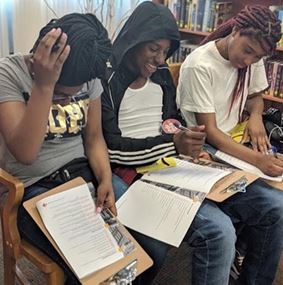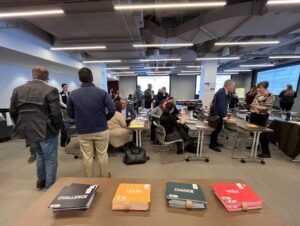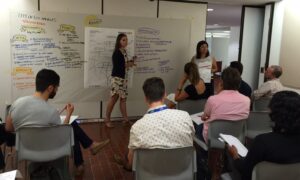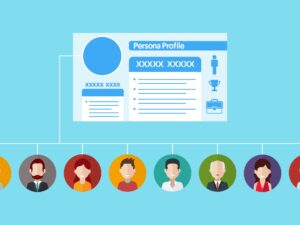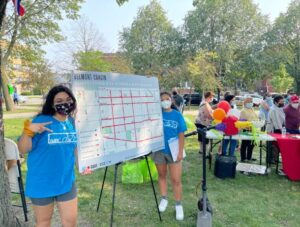Engagement Considerations
Meet people where they are physically, culturally, and emotionally.
We usually talk about meeting people where they are in the context of physical location. For instance, instead of relying on residents to put in extra effort to convene, come to them or meet them in a place where they are already planning to convene. While this is important, meeting them on a cultural and emotional level can help create a safe space where members’ stories, opinions, and ideas are better understood. This awareness can bring forth better solutions and tactics the engagement process hopes to step away with.
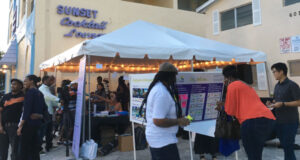
Community Engagement pop-up in Historic Northwest Palm Beach. Credit: 8 80 Cities
Understand historical context
Understanding the history of the community being engaged helps reveal how and why some communities may or may not hesitate to engage with projects. Matters such as past trauma can lead to apathy or unwillingness to participate and provide information useful for project implementation.
Content creation
When designing engagement materials such as surveys, it is important to ensure they are accessible, enjoyable, and reflective of community members’ primary languages.
Community engagement fatigue
Community engagement fatigue can occur when a community is constantly solicited for input. Fatigue is often derived from engagement having a transactional or perfunctory quality. Underserved communities are particularly vulnerable to this due to the present inequities that exacerbate transportation, health, and climate issues. To avoid this, those heading pilot projects should look for ways to foster more ongoing, consistent, back-and-forth communication with a community. Engagement needs to be intentional and meaningful, qualities get lost when interactions are viewed as one-and-done. Building trust and relationships, providing incentives, and establishing two-way communication lines are key.
Balance priorities
When it comes to shared mobility solutions, it is very important to balance priorities and understand how these services will look on the ground. While the idea to bring these services in may be well-intended, consulting community members to understand their needs will reveal whether there is interest and if these services will address certain access needs when put into place. Too often, micromobility options like bikeshare and scootershare are dropped into cities with little regard for how the community will use them concerning the larger transportation network or where they would be best placed to meet mobility needs. Even if a city’s intent is for these services to bridge first- and last-mile connections to transit, it takes planning, collaboration with community members, and integration with transit networks to see successful outcomes.
Debunk the idea of community consensus
A common misconception surrounding public engagement is that it will result in a clear course of action. Because communities are made up of a variety of people with varying needs and perceptions, the idea of all community members having one unified vision is unrealistic and weakens the engagement process. When one focuses on pursuing consensus in community engagement, it becomes easier for those heading a mobility project to revert to their original ideas and fall back into a top-down planning approach, a dynamic that hinders communities. Jeremy Levine, Assistant Professor at the University of Michigan, recommends straying away from this preferred outcome of consensus and transitioning focus on uplifting community voice. He suggests investing in “low cost, ongoing exercises that produce a high volume of information, persists even after particular projects are completed, makes priorities transparent, and neither seek nor assume a singular position from ‘the community’”

Credit: Divvy
Re-examine the engagement approach
Conversations surrounding communities’ visions for more safe and equitable travel need to be ongoing. Even in instances where entities sincerely want input that is representative and inclusive, the issue tends to lie in the way entities approach soliciting public input. Oftentimes community engagement methods include asking questions that community members are not prepared to answer due to their technical language. While the average citizen may not be familiar with technical terms or have expertise in transportation service and design, they obtain local knowledge that comes from using and experiencing public space. This useful knowledge tends to be lost in current public engagement processes which foster a dynamic where the public participation process feels more like a formality than a platform that gives weight and consideration to community needs and challenges.
How do we apply technology in a way that is sensitive to personal and cultural means? While technology is often presented as the solution to transportation problems because of its ability to automate systems and streamline efficiencies, transportation’s ultimate goal is to serve people. Stakeholders should think about the implications technological solutions may have on an individual’s ability to access essential services or participate in project-related engagement efforts. Technology can be advantageous, but stakeholders should consider what technology solutions mean on the ground. For instance, while vehicle electrification stands to benefit low-income and minority communities due to its associated emission reductions, the lack of reliable off-street charging options is a major barrier to EV adoption.
Be mindful of technological solutions
How do we apply technology while also being sensitive to personal and cultural means? While technology is often presented as the solution to transportation problems because of its ability to automate systems and streamline efficiencies, transportation’s ultimate goal is to serve people. Key relevant or affected parties should think about the implications technological solutions may have on an individual’s ability to access essential services or participate in project-related engagement efforts. Technology can be advantageous, but the key relevant or affected parties should consider what technology solutions mean on the ground. For instance, while vehicle electrification stands to benefit low-income and minority communities due to its associated emission reductions, the lack of reliable off-street charging options is a major barrier to Electric Vehicle (EV) adoption.
Compensate
Make sure you compensate communities for participating and make sure that the form of compensation is culturally sensitive. For instance, if gift cards are provided to individuals who participate in an engagement activity, the gift card should be eligible at a store that is not only in the neighborhood but regularly frequented by community members.
Seek local knowledge
Seek out and engage those who are and will be affected by the project.
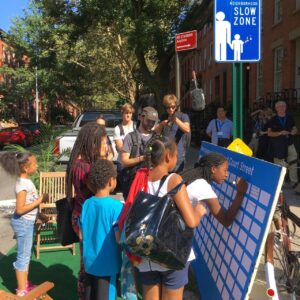
Credit: Streetsblog
Recruit from within
Instead of consulting outside entities to help collect data, recruit from within the community, allowing residents to share their local knowledge. Even once a pilot program is established, prioritize community residents to fill needed roles.
Avoid groupthink
To avoid groupthink, consider multiple engagement methods to capture unique viewpoints of the community. When a team is in groupthink mode, they will dismiss other concerns and alternative viewpoints to conform and find consensus. Groupthink is harmful to inclusive engagement because groups tend to accept a viewpoint or conclusion that falsely represents a perceived group.
Commit to an action-oriented process
Even if the planning and design process may be long, find ways to generate tangible outcomes in the short term to demonstrate progress and action towards the larger objective.
Transparency
Be clear about your intentions with engagement and how you plan to use the information provided in the decision-making process.
Open and reliable channels of communication
Open and reliable communication channels will expand the reach of engagement for a project and make sure contact with the community continues after engagement efforts are completed. For instance, having a website, phone number, or email address that is associated with the project gives community members a way to provide feedback or ask questions before, during, and after the project.
